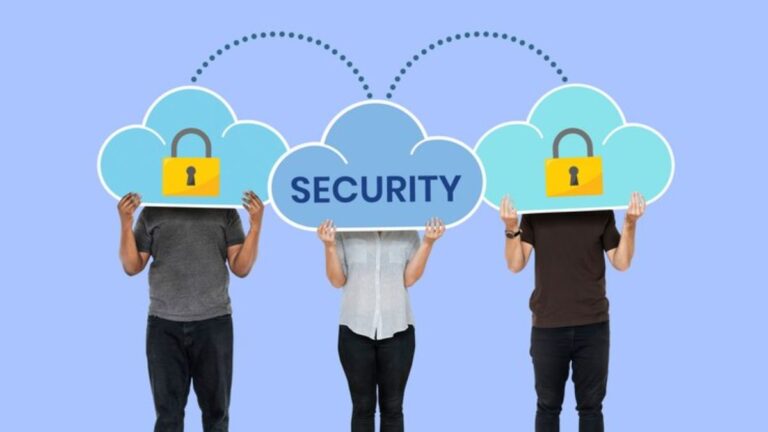Introduction to Hybrid Cloud Security
In the rapidly evolving technological landscape, hybrid cloud solutions are a favorite for organizations looking to optimize cost and efficiency. These solutions blend the best of both public and private clouds, offering scalability and security in a unified structure. However, understanding hybrid cloud security is paramount. Ensuring data protection across these interconnected environments presents unique challenges, which demand robust strategies, primarily through effective identity and access management (IAM).
As businesses continue to embrace digital transformation, hybrid cloud environments allow them to harness the agility of cloud computing while still retaining control over sensitive data. Yet, the very nature of these multi-faceted networks opens up potential vulnerabilities. Therefore, a comprehensive and integrated approach to security via robust IAM policies becomes essential. Companies can safeguard their assets throughout their digital infrastructure by implementing strategic controls and measures.
Importance of Identity and Access Management (IAM)
IAM is integral to safeguarding information in any hybrid cloud configuration. It is the gatekeeper, allowing organizations to manage digital identities and control user access rights across various platforms. By integrating IAM practices, businesses can ensure that the right people have access to the right resources, minimizing the risk of unauthorized access and potential data breaches.
Companies can effectively streamline user management and authentication processes through IAM, enabling tailored access controls that fit organizational needs. This integrated approach simplifies administrative tasks and significantly boosts security by mitigating unauthorized access. In a world where cyber threats are increasingly sophisticated and prevalent, ignoring robust IAM solutions would be a costly oversight for any business.
Principle of Least Privilege
One fundamental IAM strategy is the principle of least privilege. This principle dictates that users only have the minimum access necessary to perform their jobs. By limiting access, organizations can reduce the risk of data exposure from compromised accounts, thereby significantly fortifying their security posture against potential insider threats and user errors.
Adopting this principle translates to more than just policy documentation. It requires a holistic evaluation of access levels throughout the organization, ensuring that permissions are assigned solely as needed. This methodical approach safeguards business-critical data and ensures compliance with industry standards, such as GDPR and HIPAA, emphasizing limited data exposure and user access.
Multi-Factor Authentication: How It Helps
Incorporating multi-factor authentication (MFA) into IAM systems is another powerful method to elevate security. MFA requires users to provide two or more verification forms, making it much harder for unauthorized users to access sensitive information. Even if one credential becomes compromised, additional layers of security can prevent unauthorized access, offering a significant upgrade in protection against cyber threats.
By introducing MFA, companies move one step closer to more secure environments. The added authentication directives can substantiate user identities beyond passwords alone, which are notoriously susceptible to exploitation. Industry experts recommend MFA as a primary defense line, capable of thwarting most cyberattacks that leverage compromised credentials.
Deploying Regular Security Audits
Regular security audits are an effective way to assess your organization’s IAM policies and practices. They help identify potential vulnerabilities and measure compliance with existing security measures and industry standards. By maintaining an updated security audit schedule, businesses can remain proactive, ensuring swift identification and mitigation of risks. Exploring how to conduct a cybersecurity audit can be highly beneficial for detailed insights into conducting effective audits.
Frequent security assessments empower businesses not only to address current vulnerabilities but also to anticipate emerging threats. It’s about creating a resilient framework that continuously evolves to outpace potential adversaries. The goal is to maintain an agile security strategy that learns, adapts, and grows in line with technology advancements and the ever-shifting threat landscape.
Educating Staff and Users
Security does not end with technology; human factors play an equally crucial role. Educating staff and users about IAM protocols, password hygiene, and recognizing suspicious activities strengthens the security infrastructure. More than just a periodic mandate, continuous education and awareness are necessary to foster a security-conscious organizational culture.
Organizations should prioritize comprehensive training programs to improve workforce literacy on potential security threats and best practices. These programs should be dynamic, with materials regularly updated to reflect new technological advancements and emerging threats. Empowering employees with the knowledge and skills to manage security risks proactively transforms them into invaluable assets in the company’s defensive strategy.
Integrating Zero Trust Principles
As cyber threats become more sophisticated, relying solely on perimeter security is no longer sufficient. Integrating zero-trust principles within IAM policies means assuming that threats can emerge from within or outside the network. This model advocates for continuous verification of users based on sophisticated threat detection and analysis, ensuring that no user or system is ever fully trusted until proven otherwise.
The zero trust framework requires an architectural shift in how identities are managed and authenticated. It emphasizes the importance of continuous monitoring, enforcing adaptive access controls, and requiring real-time risk analysis. In an era where traditional security boundaries are blurred, a zero-trust approach ensures that business-critical assets are safeguarded against evolving threats, no matter where they originate.
Conclusion: Ensuring a Secure Future
Embracing hybrid cloud models allows businesses to enjoy unprecedented flexibility and innovation. However, ensuring the security of such models involves a disciplined approach to IAM. Organizations can mitigate risks effectively by adopting best practices, like least privilege, multi-factor authentication, and zero trust architectures. The path to a secure future in hybrid cloud computing lies in understanding and implementing these strategies, fortifying the digital assets they aim to protect. Building a strong IAM framework today addresses current vulnerabilities and equips businesses to face the evolving threat landscape of tomorrow.

